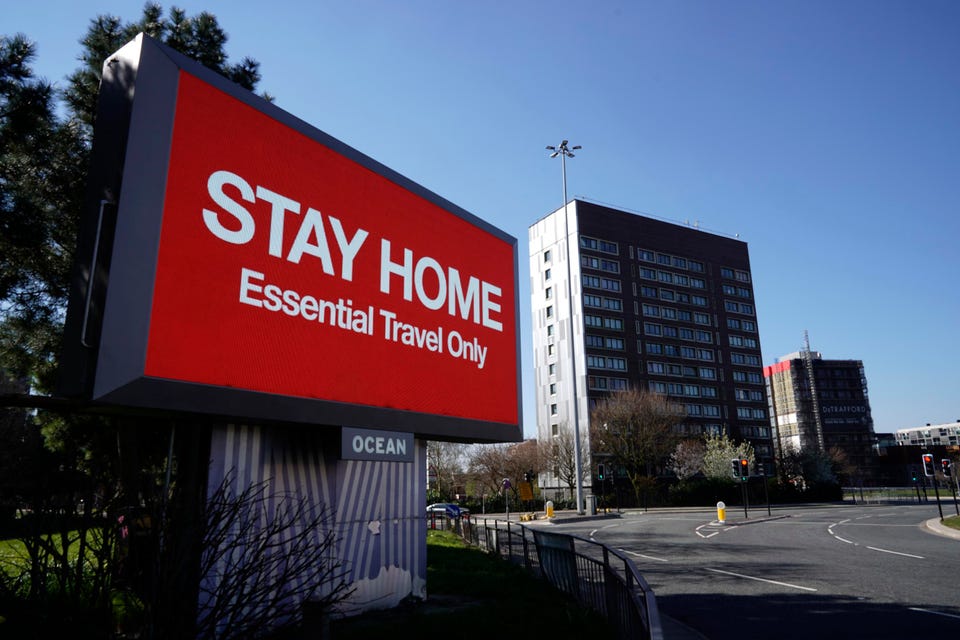Here’s How Much It Cost To Prevent A Single Covid Infection Via Lockdown


MANCHESTER, – MARCH 26: A giant television over the A57 Motorway urges people to stay home on March 26, 2020 in Manchester, England. British Prime Minister, Boris Johnson, announced strict lockdown measures urging people to stay at home and only leave the house for basic food shopping, exercise once a day and essential travel to and from work. The Coronavirus (COVID-19) pandemic has spread to at least 182 countries, claiming over 10,000 lives and infecting hundreds of thousands more.
A number of studies have looked at the economic and other impacts that resulted from lockdowns during the Covid-19 pandemic. The latest attempts to put a figure on the average cost to the American economy of preventing a single infection via state-based lockdown in the early days of the pandemic in March, 2020.
The study finds lockdowns during this pivotal period reduced the spread of infection by an estimated 56 percent, reducing the potential number of cases by as much as 80 percent over March and April of 2020.
“By examining the causal effects of state-ordered lockdowns, our research accurately reveals the trade-off: Lockdowns are effective in reducing the spread of the virus, but they come at a measurable cost to the economy and consumers,” said co-author and professor Gerard J. Tellis at the USC Marshall School of Business.
The study, published in the Journal of Public Policy and Marketing, points to specific trade-offs including reductions to gross domestic product, or GDP (−5.4%); employment (−2%); customer satisfaction (−2%), and consumer spending (−7.5%).
This translates to a loss in overall GDP of about $28,000, on average, per infection prevented. With a death rate of a little over one percent in April 2020, we could extrapolate in a crude and admittedly crass way to say that each life saved by lockdowns cost about $300,000 in economic productivity.
“Understanding the true costs and benefits of COVID-19 policies helps policymakers assess the payoff of past decisions and prepares them to navigate future large-scale health crises,” said co-author Ashish Sood, a marketing professor at the University of California, Riverside.
Interestingly, the researchers also found that lockdowns seem to amplify other preventive measures. Specifically, lockdowns increased mask usage by almost 18 percent.
“Many experts thought that lockdowns would mitigate the need for masks. However, we found that lockdowns increased mask-wearing probably due to its signaling effect of the urgency of a pandemic,” said co-author Sajeev Nair at the University of Kansas.
Of course, there’s room for criticism of the new study, which relies on comparing the outcomes of different states that imposed lockdowns at different times. However, there are a number of variables in play that can be hard to control for, such as differing cultures, weather patterns and economic factors between states, just for starters.
“Defining the counterfactual here is hard,” economist Ryan Bourne wrote about the challenge of doing lockdown cost-benefit analysis in 2021. “The alternative to lockdowns wasn’t normality, but quite a lot of voluntary social distancing that already saved lives.”
Exact figures are likely impossible to determine, but the authors say one thing is clear from the data: the spread of the disease was not the central basis for governors’ decisions regarding lockdowns. Rather their actions seemed to be largely based on political affiliation.
